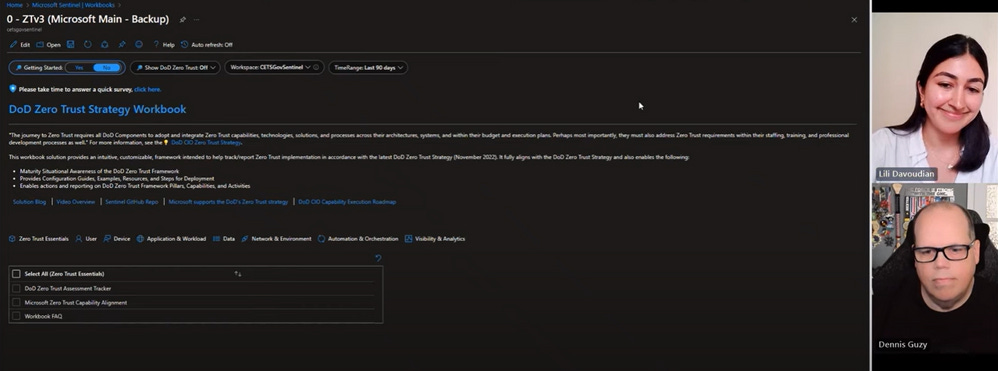Defending Against The Future: Embracing Zero Trust
Microsoft's Sentinel Gift: The DoD Zero Trust Workbook
Every day, our interconnected world becomes more susceptible to sophisticated cyber-attacks. Disturbingly, the U.S. government network faces almost half of all nation-state cyber threats, according to the Microsoft Digital Defense Report of 2022. To bolster defenses, the Department of Defense (DoD) has embarked on a comprehensive plan, pivoting from mere compliance checks to proactive defense strategies.
From Perimeter Defense to Zero Trust
Recognizing the increasing threat levels, the DoD made a crucial move in January 2022. They set up the Zero Trust Portfolio Management office, subsequently unveiling the Zero Trust reference architecture. Their November 2022 update provides an intricate road map, detailing 45 capabilities and 152 activities required to embed this strategy.
In essence, this new blueprint moves away from a traditional "secure the borders" approach. Instead, it operates on the understanding that adversaries may already be within the DoD's networks. By 2027, the DoD aims to have a fully embedded Zero Trust framework.
Microsoft's Gift: The DoD Zero Trust Workbook
Recognizing the challenge ahead, Microsoft has launched the DoD Zero Trust workbook. Curious about how it looks and functions? Watch our DoD Zero Trust Workbook demo.
Three core principles underline the Zero Trust methodology:
Verify explicitly: Always authenticate and verify.
Use least privileged access: Grant only what is necessary.
Assume breach: Always be on guard.
Having incorporated Zero Trust within its own walls, Microsoft stands as a beacon for others. Our mission is not just to shield our assets, but to help organizations worldwide achieve the same security.
Microsoft Sentinel: The Heart of Cyber Defense
The Sentinel platform, backed by AI, serves as a lighthouse, offering an overarching view of an enterprise's digital landscape. It's not just about detecting threats, but also orchestrating responses, automating tasks, and efficiently managing security alerts. At its core, Sentinel is about empowering defenders.
Key to this is the workbook. These workbooks, designed for a wide array of professionals, from security architects to IT pros, offer a unified view of Microsoft and third-party data. The idea is to streamline and simplify the DoD Zero Trust strategy, making it more accessible and actionable.
FAQs: Your Zero Trust Guide
Who is this for? Whether you’re an executive decision-maker or a boots-on-the-ground technician, if you're responsible for the DoD Zero Trust Strategy's implementation, this workbook is for you.
Is it only about Microsoft? No. While Microsoft tools and solutions are highlighted, the workbook accommodates alternate implementations.
Customization? Absolutely! Tailor it to your organization’s needs with the guidance of your Account Representative.
Feedback? Yes, please! We thrive on user feedback. Offer your insights through our survey.
For more queries, deep dive into our detailed FAQ section.
Conclusion
The path to Zero Trust is clear, but with diverse terrains and potential pitfalls. With the DoD Zero Trust workbook, Microsoft provides a map, a compass, and a guide. The journey towards a safer, more secure digital realm has begun.
Explore more on Zero Trust:
Visualize and Monitor your Data with Workbooks
Microsoft's Zero Trust Model
Implementing Zero Trust at Microsoft
Join us as we pioneer a new era of digital security.
Original post Credit - Accelerating Zero Trust Alignment with Microsoft Sentinel - Microsoft Community Hub




